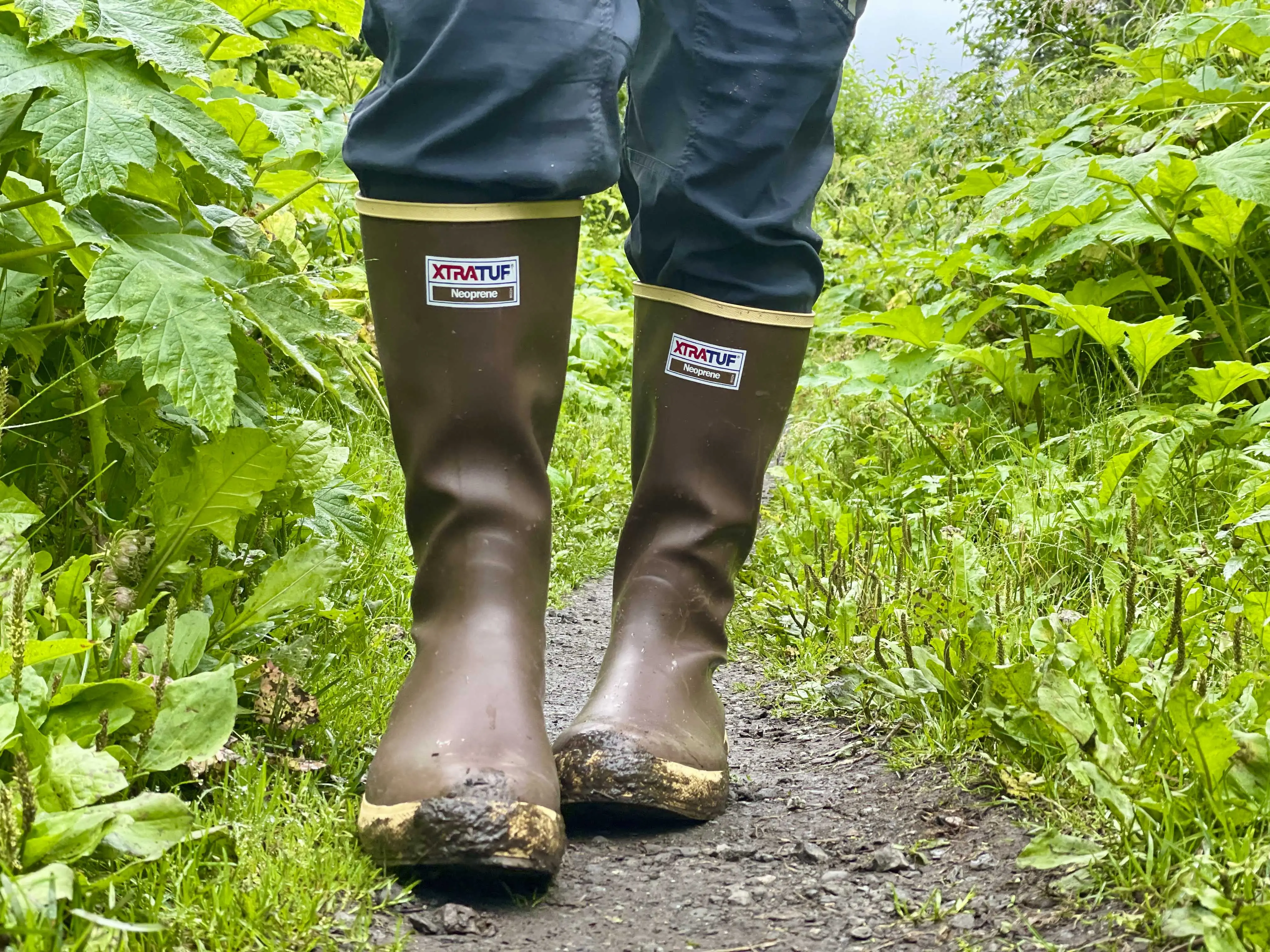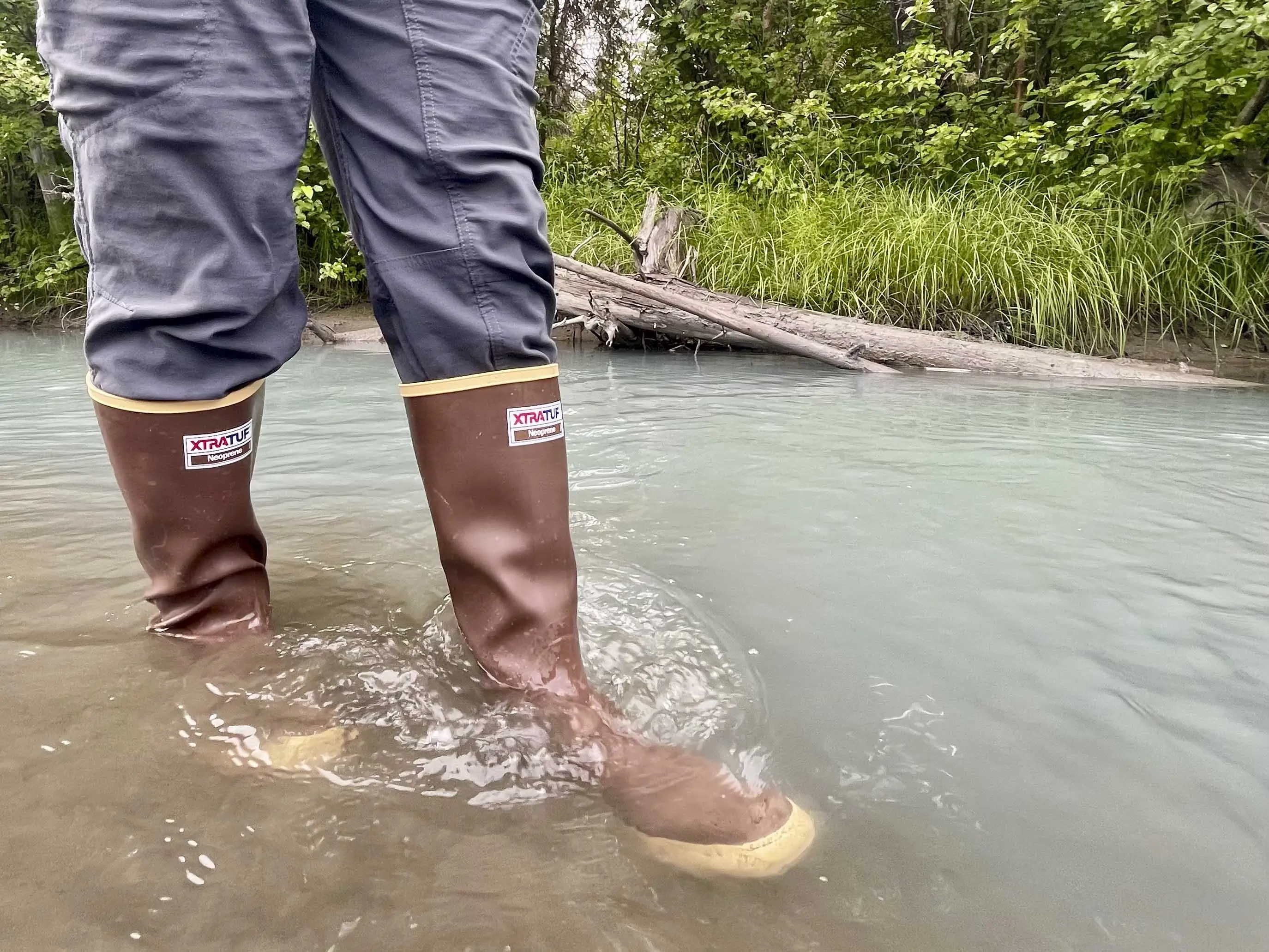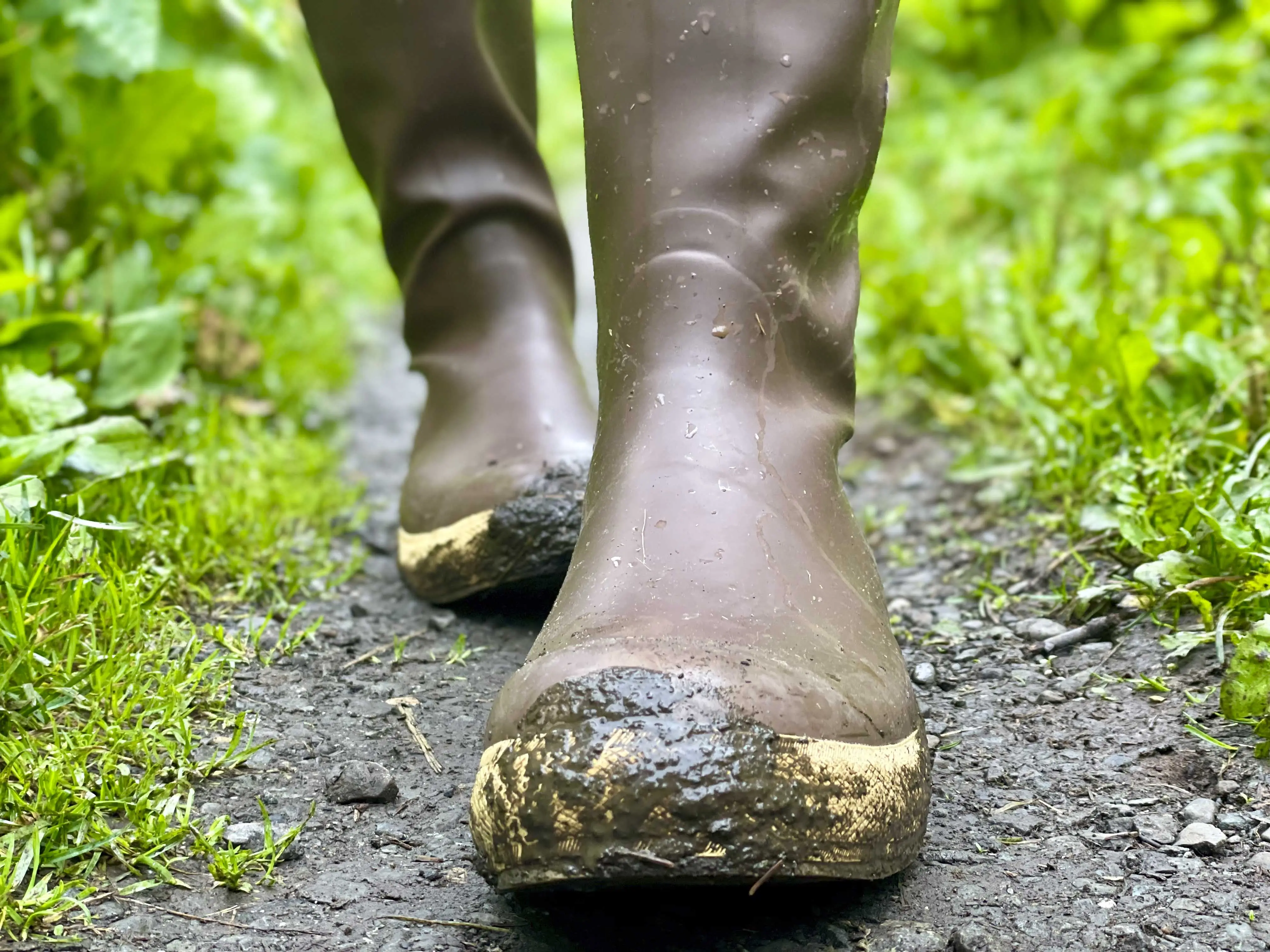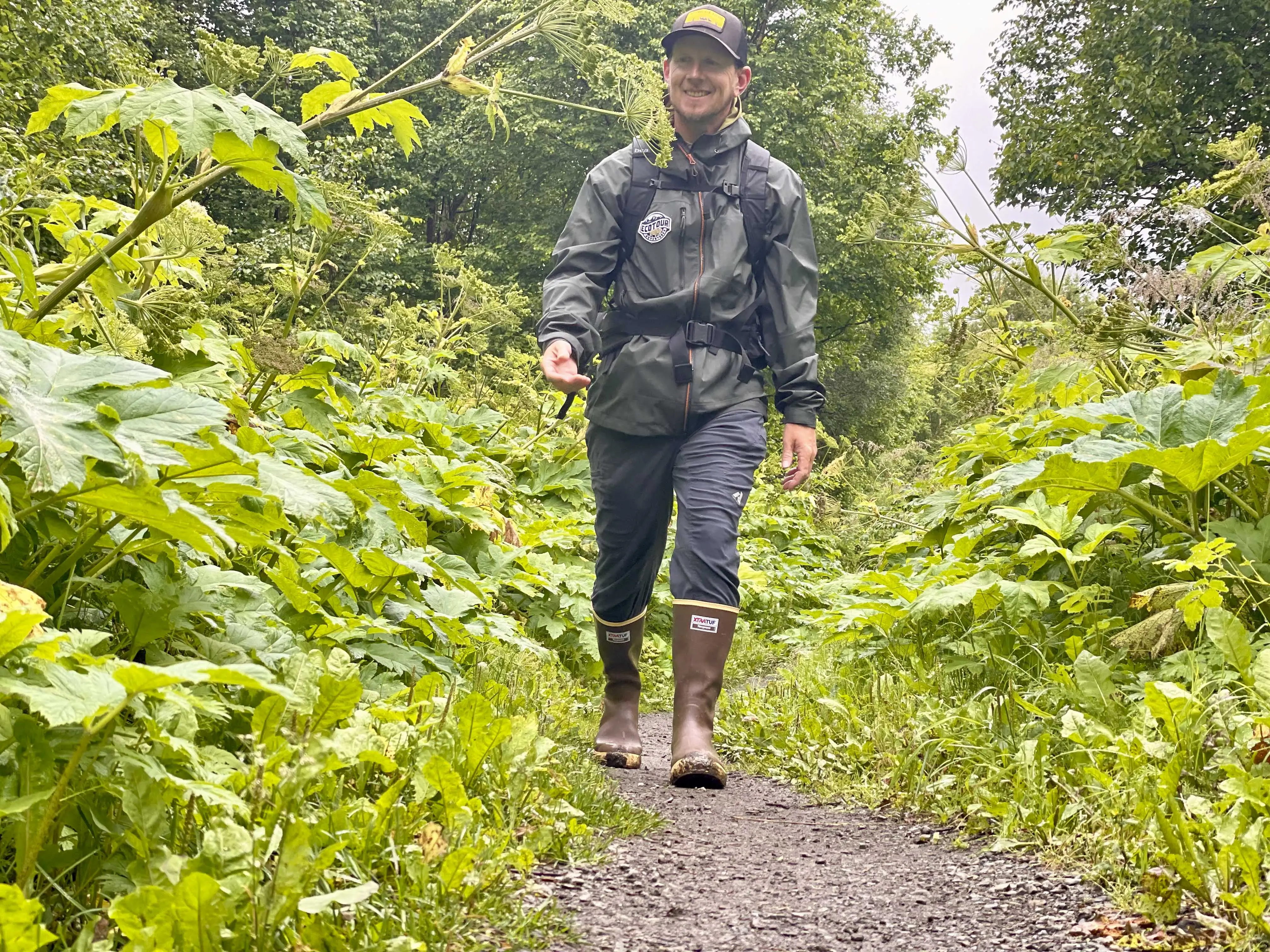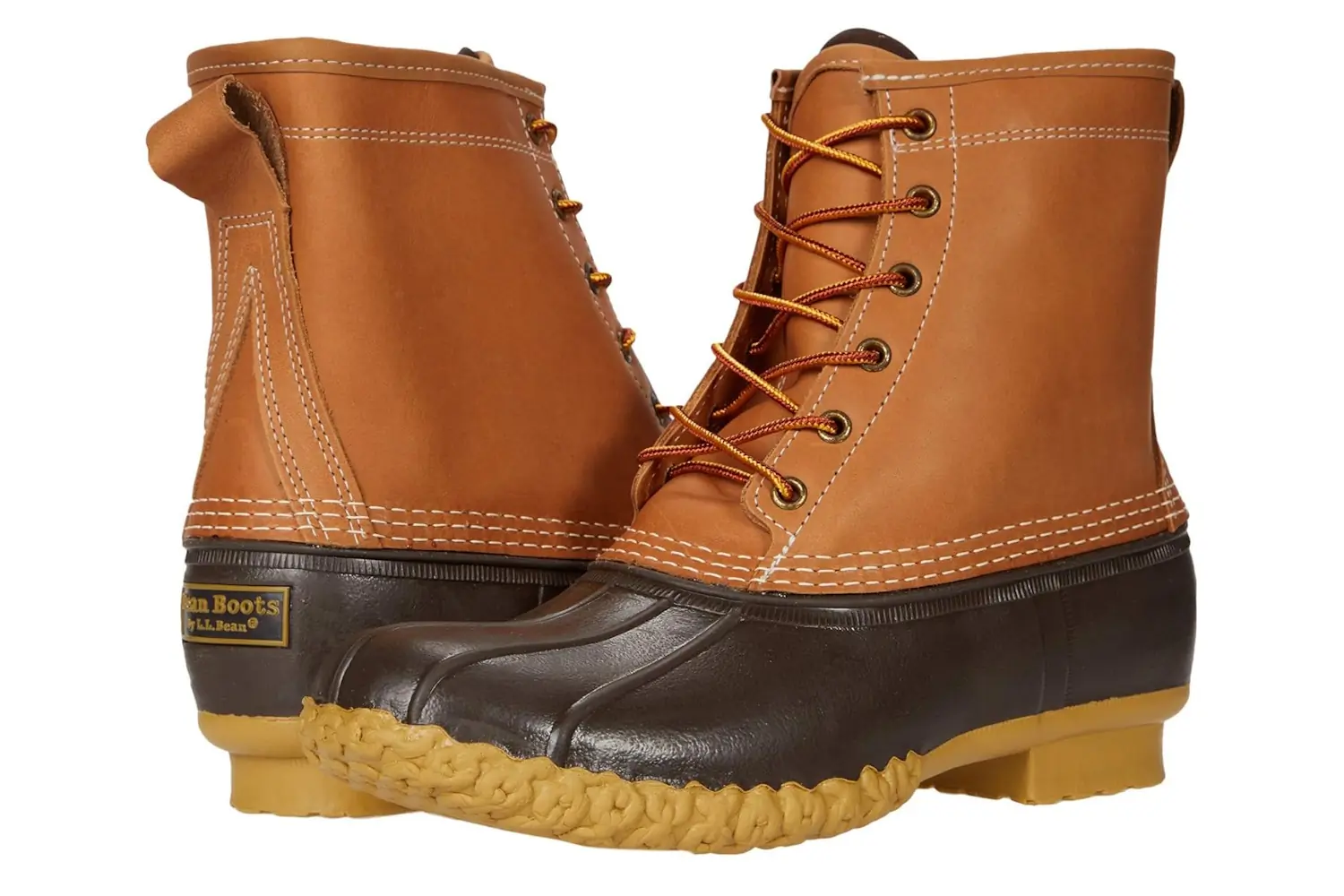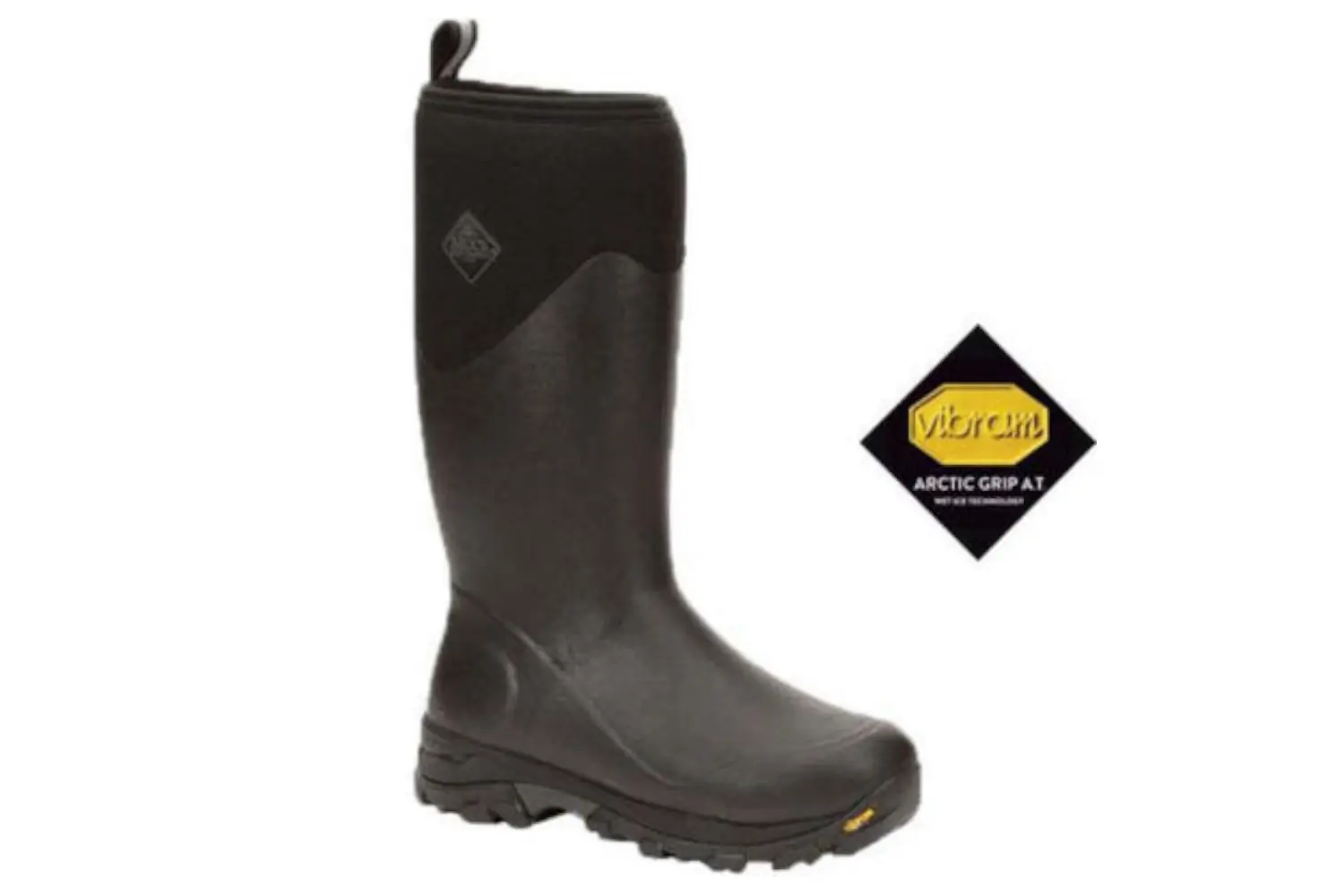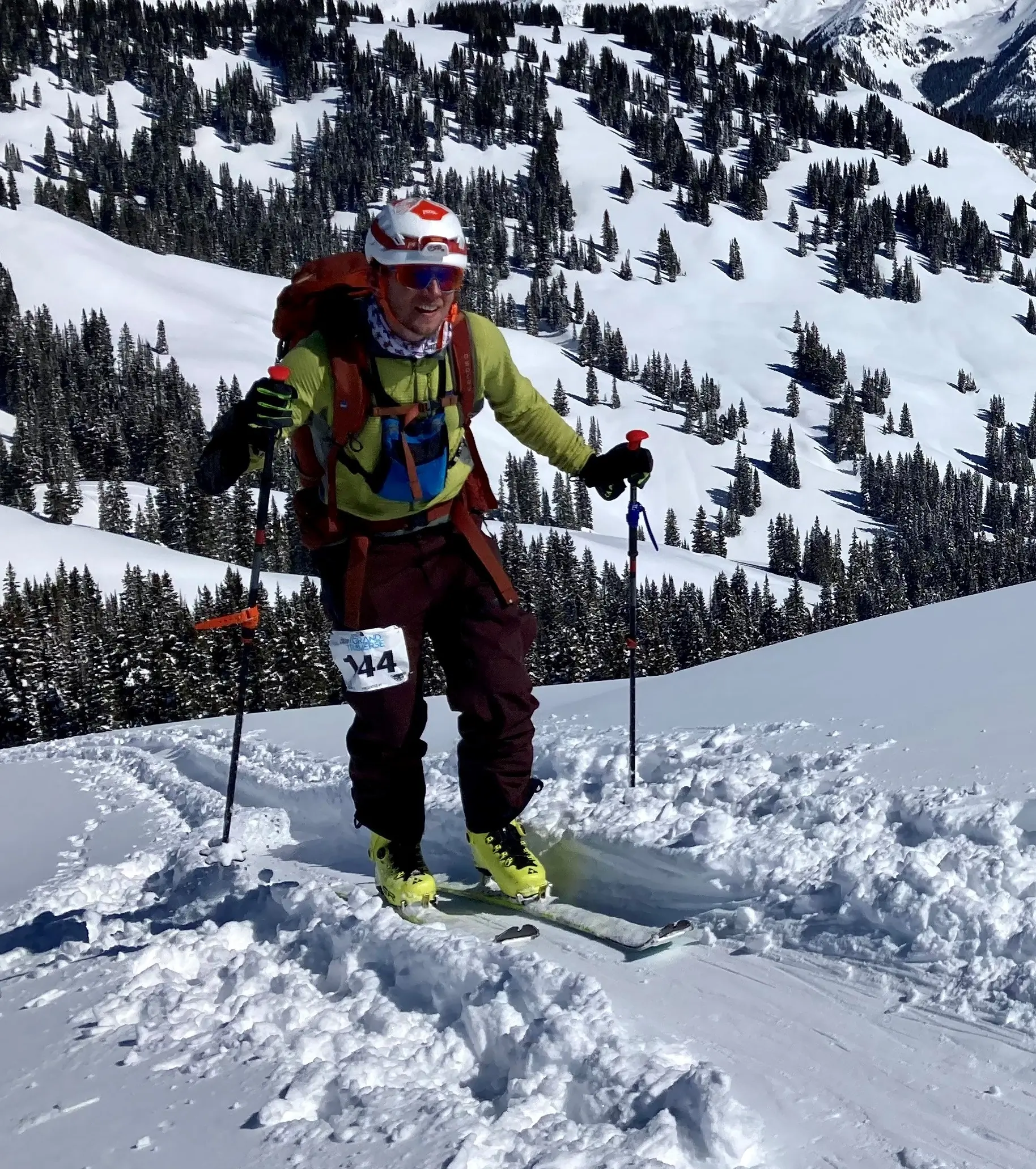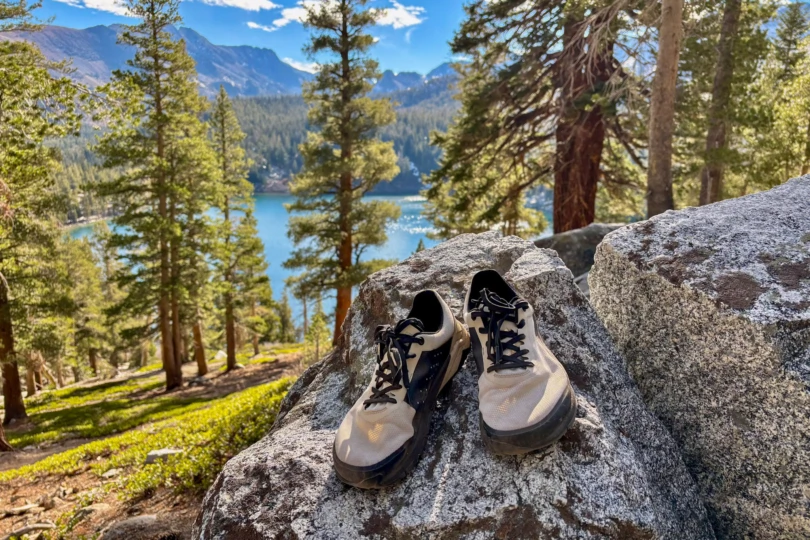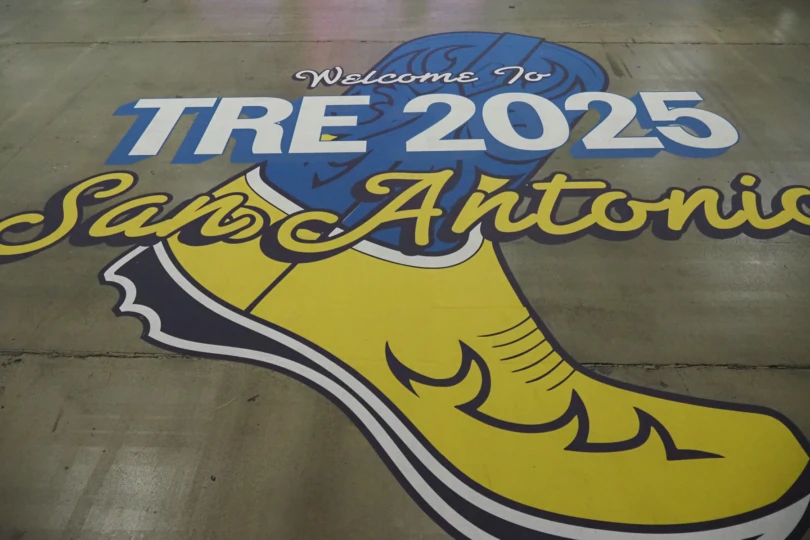When the skies open up and puddles line every path, the right pair of rain boots can make all the difference. Whether commuting through city streets, trudging through muddy trails, or simply walking the dog on a wet morning, the best rain boots keep your feet dry and comfortable. These are the options we recommend for 2025.
For this guide, we rigorously tested over 20 top-performing styles for every need, from rugged storm-ready pairs to lightweight, everyday options that don’t sacrifice style for function. Armed with a wealth of review experience, lead testers Eric McKeegan and Ryan Kempfer scrutinized each boot’s performance under real-world conditions. We were blessed and cursed with record-setting amounts of rain and spared no effort in our quest to identify the best rain boots by evaluating them for comfort, traction, durability, and water resistance.
Whether you’re seeking simple function from a budget option like the Baffin Enduro or the overall performance of our top pick, the Grundéns Deviation Ankle Boot, we’ve curated a selection of top-rated boots to suit every style and preference. Scroll through our top picks to confidently navigate the world of rain boot shopping and find the perfect pair for your wet-weather recreation.
Editor’s Note: We updated our Rain Boots Guide on May 15, 2025, by adding the versatile, field-tested, XTRATUF 15″ Legacy Boots to our line-up and revising our review of our newly awarded most comfortable pick, the XTRATUF Ankle Deck Boot Sport.
The Best Rain Boots of 2025
Grundéns Deviation 6″ Ankle Boot
- Height: 6”
- Weight: 3.15 lbs.
- Insulated: No
- Style: Slip-on, low
- Removable insole: Yes
- Sole: Lugged/siped
Pros
- Lugged sole provides excellent traction and stability
- Interesting styling doesn’t immediately scream rain boots
- Many color options
- Soft but supportive insole and midsole
- Molded-in reinforcements in high-wear areas
Cons
- Heavy for an uninsulated short boot
- A wee bit narrow in the forefoot
- Heel-lift on steeper terrain
Baffin Enduro
- Height: 16”
- Weight: 4.78 lbs.
- Insulated: No
- Style: Slip-on, high
- Removable insole: Yes
- Sole: Lugged
Pros
- Excellent price
- Good traction, even in loose terrain
- Made in Canada
- Can be found for less money
Cons
- A bit heavy
- Stiffer rubber is less comfortable while walking
XTRATUF Ankle Deck Boot Sport
- Height: 5.5”
- Weight: 2.14 lbs
- Insulated: No
- Style: Slip-on, low
- Removable insole: Yes
- Sole: Deck, foam
Pros
- Pillow-soft comfort
- Excellent wet-surface traction
- Reflective pull tabs
- Lightweight
- Versatile
Cons
- Ankle cut means less protection
BOGS Classic High Boot
- Height: 14”
- Weight: 4.62 lbs.
- Insulated: Yes, rated to -40F
- Style: Slip-on, high
- Removable insole: Yes
- Sole: Lugged
Pros
- Lightest of the tall boots in this test
- Great sole for all-terrain use
- Excellent comfort standing and walking
- Sizes up to 21!
Cons
- Upper can be a tight fit for tucked-in pants and larger calves
- Won’t win any fashion awards
XTRATUF Legacy 15″
- Height: 15"
- Weight: 4 lbs. (average per pair)
- Insulation: Uninsulated (open cell foam and Neoprene retain heat well)
- Upper material: Triple-dipped latex neoprene
Pros
- Completely waterproof, great for standing in rivers
- Durable
- Warm
- Easy on, easy off
- A go-to boot that just works
- Let's be honest, they're cool looking
Cons
- Not comfortable for long-distance walking
More Rain Boots For Mucking About
- Height: 9” (8” to top of waterproof liner)
- Weight: 3.17 lbs.
- Insulated: Yes (warm rating, lowest on LL Bean scale)
- Style: Lace-up, low
- Removable insole: Yes
- Sole: Chain link tread
Pros
- Comfortable, if narrow fit
- Laces provide a better fit for hiking/walking/active stuff
- Classic looks
- Made in U.S.
Cons
- Just OK traction
- Classic look might not be for everyone
- Fit is different than most lace-up boots
- Height: 14.5”
- Weight: 4.85 lbs.
- Insulated: No
- Style: Slip-on, high
- Removable insole: Yes
- Sole: Deck, Michelin
Pros
- Very supple rubber
- Most comfortable of the tall boots
- Excellent traction, even on looser surfaces
- Included silicon band holds rain pants in place
- Lifetime warranty
Cons
- Shallow lugs packed up with mud
- Expensive
- Not light for a lightly insulated boot
- Limited sizing
- Height: 7”
- Weight: 3.2 lbs.
- Insulated: No
- Style: Slip-on, low
- Removable insole: Yes
- Sole: Lugged/siped
Pros
- Easiest entry and exit of all boots reviewed
- Three color options
- Algae-based insole
- Reinforced high-wear areas
- Wide shaft makes for good airflow
Cons
- Loose fit makes challenging terrain even more challenging
- Heavy for an uninsulated short boot
- Wide top more easily lets in rain and snow
- Height: 16”
- Weight: 5.53 lbs
- Insulated: Yes (-60F)
- Style: Slip-on, high
- Removable insole: Yes
- Sole: Lugged, Vibram
Pros
- Very warm
- Excellent traction on all surfaces
- Protectively stiff toe area
- Room for thicker socks
- Decently easy on and off for an extra tall boot
Cons
- Snug around calf
- Tall height can cause chafing with extended wear
- Stiff construction is tiring to walk in
- Height: 15.5”
- Weight: 5 lbs.
- Insulated: No
- Style: Slip-on, high
- Removable insole: No
- Sole: Lugged
Pros
- Very, very inexpensive
- Cheaply made
- Can be found even cheaper with an easy web search
Cons
- Off-gassing/smell
- Uncomfortable
- Heavy
- Slippery sole
- No liner or insole
Rain Boots Comparison Chart
| Rain Boots | Price | Height | Insulated | Style | Sole |
|---|---|---|---|---|---|
| Grundén Deviation Ankle Boots | $135 | 6” | No | Slip-on, low | Lugged/siped |
| Baffin Enduro | $75 | 16” | No | Slip-on, high | Lugged |
| XTRATUF Ankle Deck Boot Sport | $135 | 5.5″ | No | Slip-on, low | Deck, foam |
| BOGS Classic High Boot | $135 | 14” | Yes, rated to -40F | Slip-on, high | Lugged |
| XTRATUF Men’s 15″ Legacy Boot | $150 | 15″ | No | Slip-on, high | Lugged |
| Grundéns Crewman Tall Boot | $180 | 14.5” | No | Slip-on, high | Deck, Michelin |
| BOGS Digger Mid Rain Boot | $85 | 7” | No | Slip-on, low | Lugged/siped |
| Muck Arctic Ice Tall + Vibram Arctic Grip All Terrain | $205 | 16” | Yes (-60F) | Slip-on, high | Lugged, Vibram |
| CLC Plain Toe PVC Rain Boots | $28 | 15.5” | No | Slip-on, high | Lugged |
| L. L.Bean Men’s Bean Boots 8″ GORE-TEX/Thinsulate | $259 | 9” | Yes (warm rating, lowest on LL Bean scale) | Lace-up, low | Chain link tread |

How We Tested the Best Rain Boots
Our Expert Testers
We extensively evaluated many top-notch rain boots over a rigorous two-year period. Our testing ground was the diverse landscapes of western Pennsylvania, Alaska, and Wyoming, where we waded in streams, crossed rivers, traversed city streets, wooded trails, and everything in between, from leisurely dog walks to rain-soaked hikes and even a few wet bike rides.
At the helm of our testing endeavors is Eric McKeegan, a veteran reviewer with a 20-year track record. His storied career includes a distinguished tenure as Tech Editor for two leading cycling magazines, and he brings expertise and insight to the table. Beyond his expertise in the realm of bikes, Eric’s passion for outdoor pursuits extends to boating, camping, and hiking, making him highly qualified to assess the performance of rain boots across a spectrum of activities and environments. Writer and wildlife guide, Ryan Kempfer, also stepped in to put some of these boots through the wringer on bear watching adventures in Alaska, Grand Teton, and Yellowstone.
We combined real-world use and controlled testing to provide you with the most accurate and trustworthy recommendations. From waterproofing and traction to comfort and durability, each boot is meticulously evaluated to ensure that only the best earn our seal of approval.
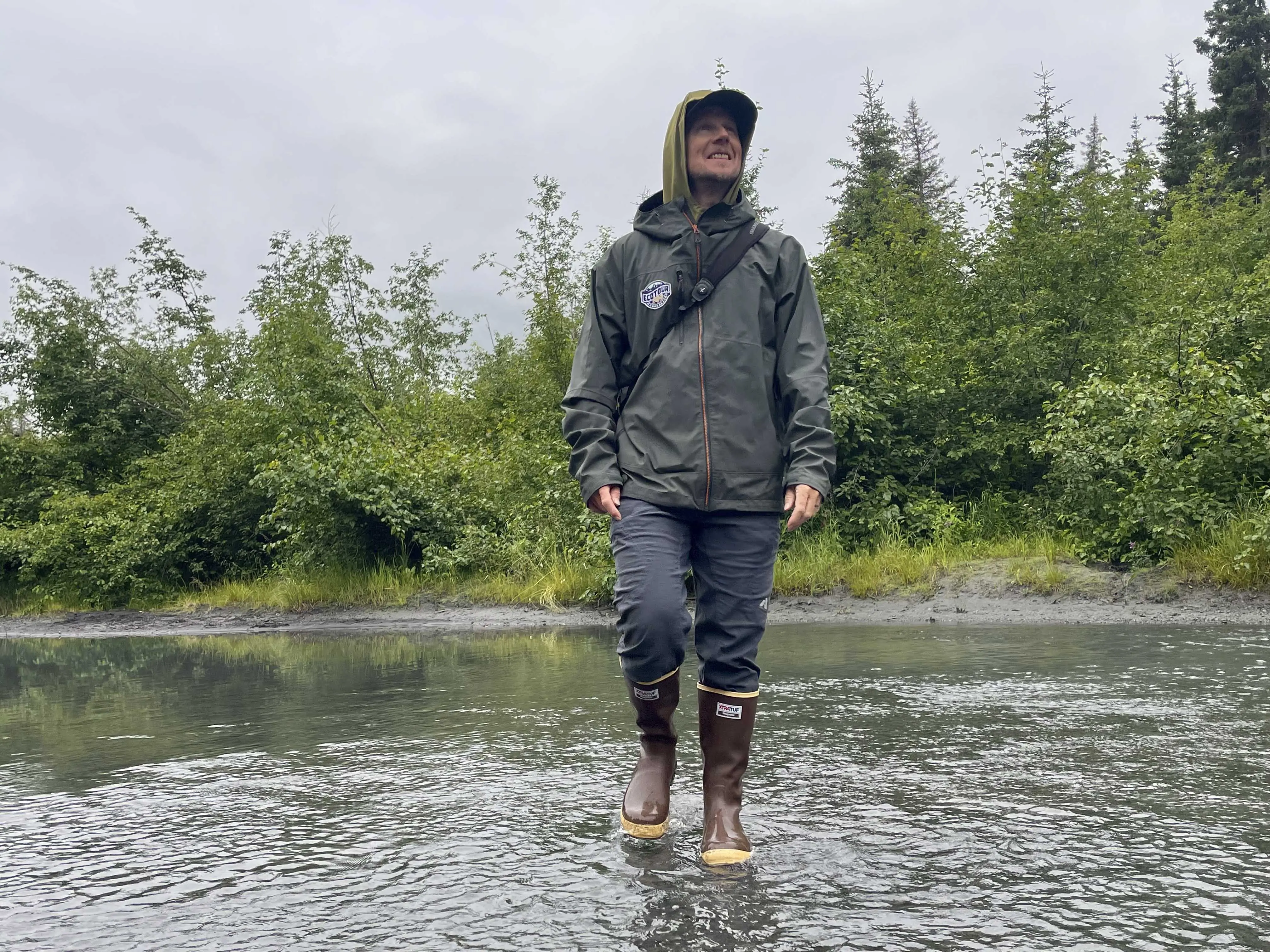



With our experience and dedication, you can trust us to guide you toward the perfect pair of rain boots for your next adventure, knowing that our recommendations are backed by decades of experience and a passion for delivering the best buyer’s guides. Check out our Best Rain Boots for Women guide if you’re looking for women-specific choices.




Our Testing Process
Our testing focused on the following aspects:
Waterproofing: All boots spent time in the rain and some late-season snow. We also used a 100-year-old clawfoot tub for immersion tests. Waterproof boots float, so we submerged them for an hour using bricks inside the boots and stones on the toes. All boots passed this test, and no leaking was detected.
Comfort/Fit: The boots were worn on pavement, trails, and along the shores of rivers. Driveways were shoveled out, and bikes and motorcycles were washed. Comfort was evaluated for both standing and walking. We noted stiffness, sizing, and insole quality.
Traction: Traction was evaluated on multiple surfaces including pavement, rocks, dirt, mud, and wet wood. Other than the cheapest boots on the test, all the boots handled a wide variety of slippery surfaces well.
Durability: All boots were examined after the test period to check for excessive wear, delamination, or defects. We will continue monitoring durability over the next year and update this guide periodically with our findings. If you want boots more suited for hiking, consult our guide to the best hiking boots and best winter hiking boots.




Buyer’s Guide: How to Choose the Best Rain Boots
Style of Boot
The classic tall rubber boot is the default rain boot for good reason. The 12-16” stack height protects clothing, allows for walking through deep puddles or shallow streams, and is easy to keep clean. But tall boots are heavy and must fit more loosely to slip on and off. This looser fit makes them less suited for long walks or hikes. Also known as gum boots, wellingtons, wellies, or in Welsh as “esgidiau glaw”. The Baffin Enduro is a good example of the most basic of this boot style.




A shorter boot (6-8”) won’t provide the same level of protection as a tall boot but will be substantially lighter, fit more snugly, and work better for longer walks. The BOGS Digger Mid and Xtratuf Ankle Deck Boot Sport are slip-on examples.
Rain boots are rarely lace-up, but the L.L.Bean Men’s Bean Boot (not a typo, L.L.Bean is the company, Bean Boot is the boot name, maybe we should just call it the LLBBB, or 2L3B) is an interesting hybrid of hiking and rubber boots. This is the original that has spawned many knock-offs. If comfort and support are important shopping considerations, these are worth a serious look over slip-on styles.




Materials and Construction
Most of these boots use rubber and neoprene, which are both proven to be durable and resilient. Rain boots are usually constructed with a glued-on outsole and some type of liner. As with most things, the connection points are the most common failure location.
Before wearing them check the seams and liner for peeling or improper adhesion. All boots we tested passed visual inspection. The L.L.Bean Men’s Bean Boots have a few loose ends on the seams, but nothing turned into an issue.
Boot stiffness is affected by the liner and rubber. The Grundéns Crewman Tall combines thinner rubber and a thicker liner to be the flexiest tall boot. The Muck Arctic Ice Tall is by far the thickest and is easily the stiffest as well. The CLC Plain Toe PVC Rain Boots are an odd blend of stiff yet floppy. They had to be stuffed to support the stack for photos.
Also, check the rubber uppers for cracking. This seems to be the most common complaint across all brands. Even a tiny crack can ruin the waterproofness, and with a single-year warranty on most of these boots, pay attention and act quickly if something appears.




Comfort and Fit
We had good luck following the manufacturer’s sizing guides for rain boots. It’s rare to find rain boots in half sizes, and everyone recommends sizing them up. Erring on the large size leaves room for thicker socks and more room for the rubber to fold and crease while walking.
We ordered all boots in size 10 except for the Bean Boots and found the fit to be consistent across the board. Most were a little loose on size 9.5 feet but worked OK with thin and thick socks. The Bean Boots actually recommend sizing down, and the size 9 fit decently well lengthwise. The volume felt small across the forefoot and toes on an admittedly high-arch, high-volume foot.
If you can’t try the boots on in person, make sure you can return them for a different size if needed. Also, keep in mind your calf size. There are tall boots with gusseted shafts or drawstrings that can help fine-tune that fit or snug up to keep out the elements.
Bogs offers sizes up to 21 in a few models, but most brands tap out at size 14. Bean offers D and EE widths.




Warmth
Most rain boots are three-season items. Uninsulated boots, such as the Xtratuf Ankle Deck Sport and Baffin Enduro, will keep your feet coolest in summer. Combined with a thicker sock, they should also extend well into the spring and fall.
Insulated boots like the Muck Arctic Ice, Bogs Classic, and L.L.Bean Boot GORE-TEX/Thinsulate are the ticket for winter but will become uncomfortable as the temperatures approach the 40s.
The Grunden’s Crewman Tall is lightly insulated and works best in spring and fall, but might be too hot in summer and not warm enough in winter.
There are no industry standards for warmth and everyone reacts to cold differently. So, what might work for one person in the cold (uninsulated boots and thick socks) might quickly leave someone else with frozen toes. If you are shopping for cold-weather protection, err on the side of being too warm rather than risking it with a less-insulated boot. And for big hikes where you need to stay warm, explore our Best Winter Hiking Boots guide.




Traction
Wet surface grip is very important for rain boots. A good lugged sole is the most versatile choice here, but a lower-profile sole can work well on most surfaces besides snow and mud.
Commercial fishing boats are notoriously slippery, and brands like Xtratruf and Grundéns are well known for making great boots for use in those conditions. The Grundéns Deviation 6″ Ankle Boots have great traction, and if they work well on a slippery wooden boat deck, they should also be excellent on land.
If traction is paramount, look for name-brand outsoles such as Vibram on the Muck Arctic Ice Tall or Michelin on the Grundéns Crewman Tall. Both of these boots provided excellent traction.




Price & Value
Budget
The Baffin Enduro reigns supreme in the budget price range ($25-75). They can often be found on sale for much less than $75, but even at full price, they are a great buy. They somehow avoid the pitfalls of the budget boot category.
At this price point, the main issue to look out for is poor traction on wet surfaces. Soles that feel secure on pavement, concrete, and soft terrain can be downright dangerous on wet, hard surfaces. Walking into a building with a polished floor and faceplanting is a real concern with some of the outsoles at this price.
Comfort is often compromised as well, but a decent insole can go a long way to make a cheaper rain boot feel better. Longevity is also a concern. Cracks in the rubber, delaminations, and outsole separation are all problems often seen in budget rain boots.
Mid-Tier
Boots in this price range ($75-150) are often very high-quality, and the choices are almost overwhelming. Many brands are competing in this space, with very similar-looking products. Compared to budget boots, you’ll see increased comfort, more durability, and better traction.
Our #1 overall choice lives at this level, the Grundéns Deviation 6″ Ankle Boot. At $135, it combines amazing comfort, great traction, a selection of colors, and durable construction. The lugged outsole might be overkill, but there few downsides to having too much traction. And certainly you’d rather too much than not enough.
The Bogs Classic High ($135) gets a shout-out here as well for being the most affordable insulated boots we reviewed. They also won the Best Cold Weather rain boots, mostly on the strength of their price-to-performance ratio.
Unless you are an everyday rubber boot user (commercial fisherman, industrial worker, concrete installer, Alaska resident, etc.), spending above this price has diminishing returns.




Premium
At this price point ($150 and above), expect to see the best materials, outsoles designed specifically for their intended purpose, and commercial-grade construction. The Grundéns Crewman ($180) was our top pick until they were replaced by the Deviation, but they are still the most versatile boots we tested. With their Michelin outsole, incredible comfort, and supple, durable rubber, these commercial fishing boots are expensive but not over-priced.
The most expensive boots we tested, the Bean Boots ($259) are a hybrid between leather and rubber boots, include GORE-TEX and Thinsulate and reflect that in their price.
Frequently Asked Questions
Rain boots can be hard on feet due to a looser fit, not enough support, and stiff construction. A good insole and proper sizing can fix these issues.
When in doubt, size up. Leaving room for a thicker sock can make your boots more comfortable at colder temperatures.
A good rubber conditioner (Gear Aid Revivex is recommended by Grundéns) will keep the boots supple. Apply every few months. Some brands recommend olive oil as well.
Some people’s feet sweat more than others, so switching to Merino wool socks will absorb sweat and odors. If the wetness is coming from outside the boot, check for any leaks, and make sure water isn’t sneaking on over the top of the boots in deep puddles or streams.
Rain pants always go over rain boots to keep water from running down and into the boats. Non-waterproof pants are often tucked into the boots to prevent the hems from dragging on the wet ground or getting splashed from puddles.


The Best Rain Boots for Women of 2025
We tested the best rain boots for women with options for every budget. Top picks include Grundéns, Xtratuf, BOGS, and more!
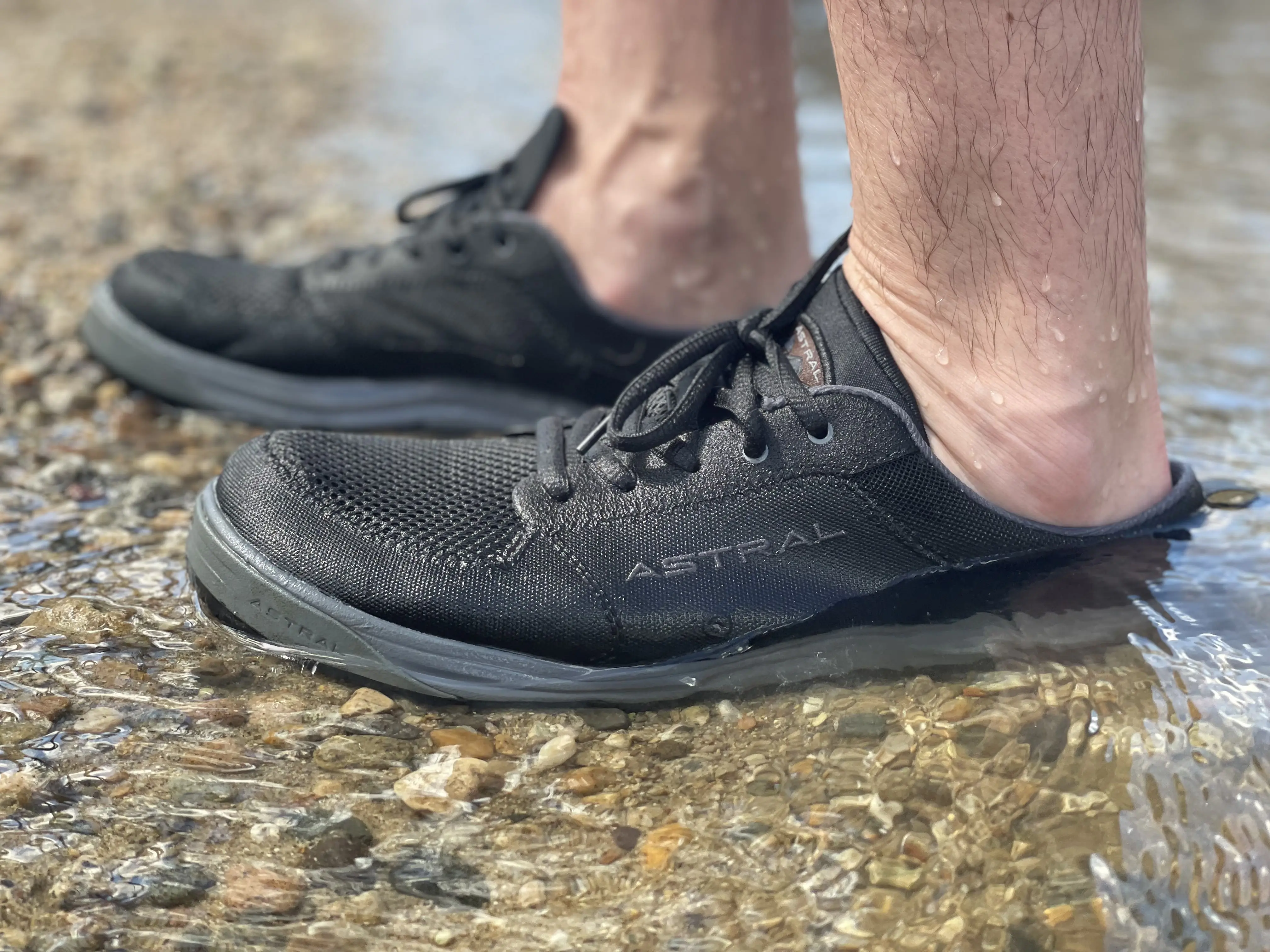

The Best Water Shoes of 2025
We tested the best water shoes of 2024 with options for every budget. Top picks include Astral, Xero, NRS, and more!
